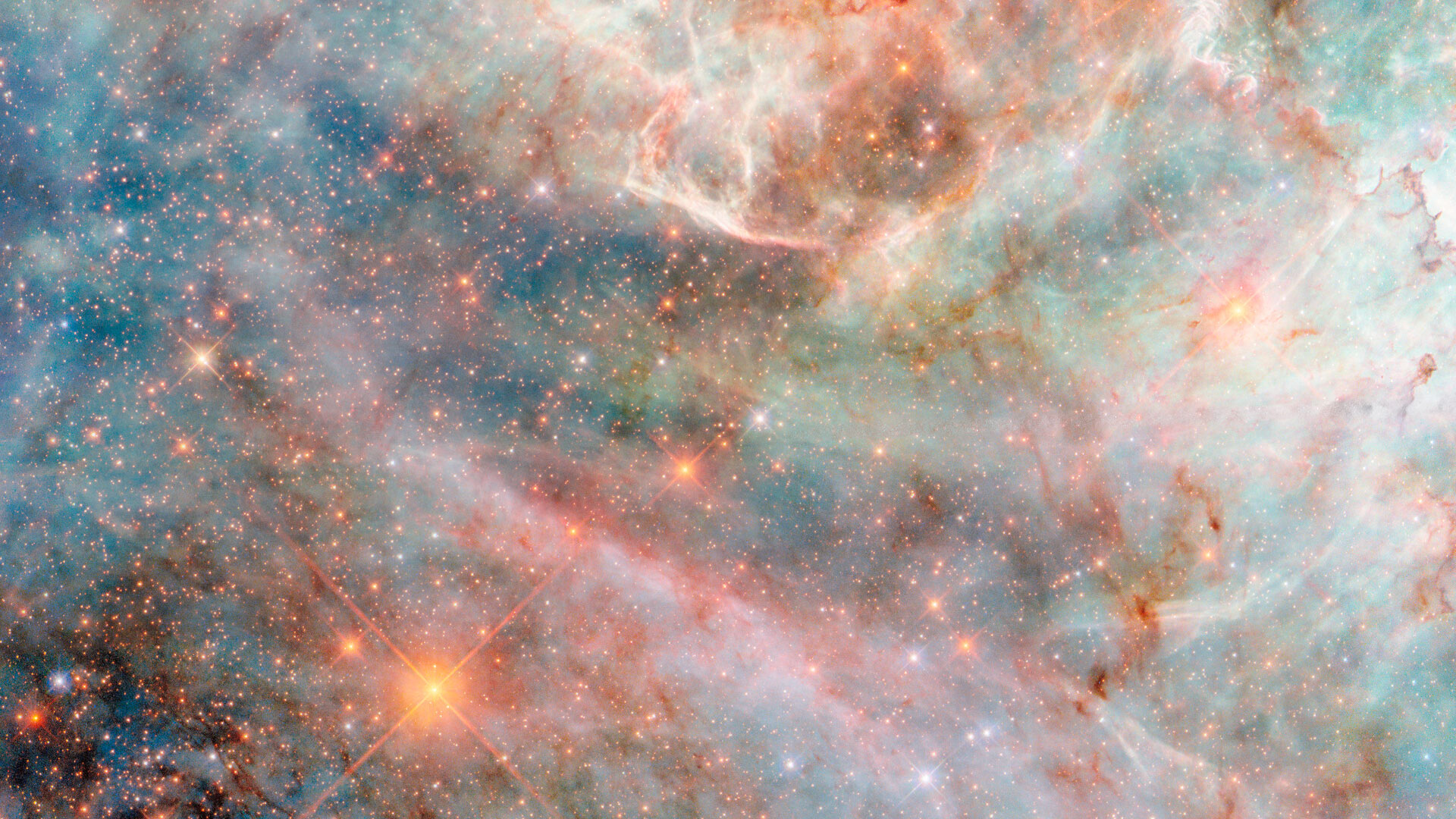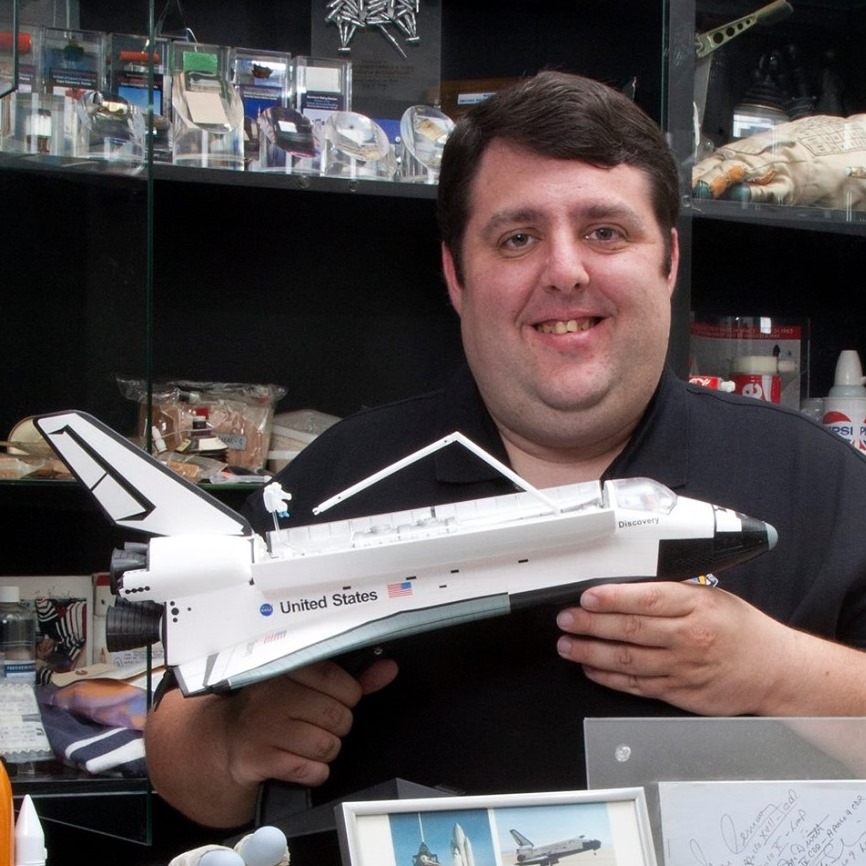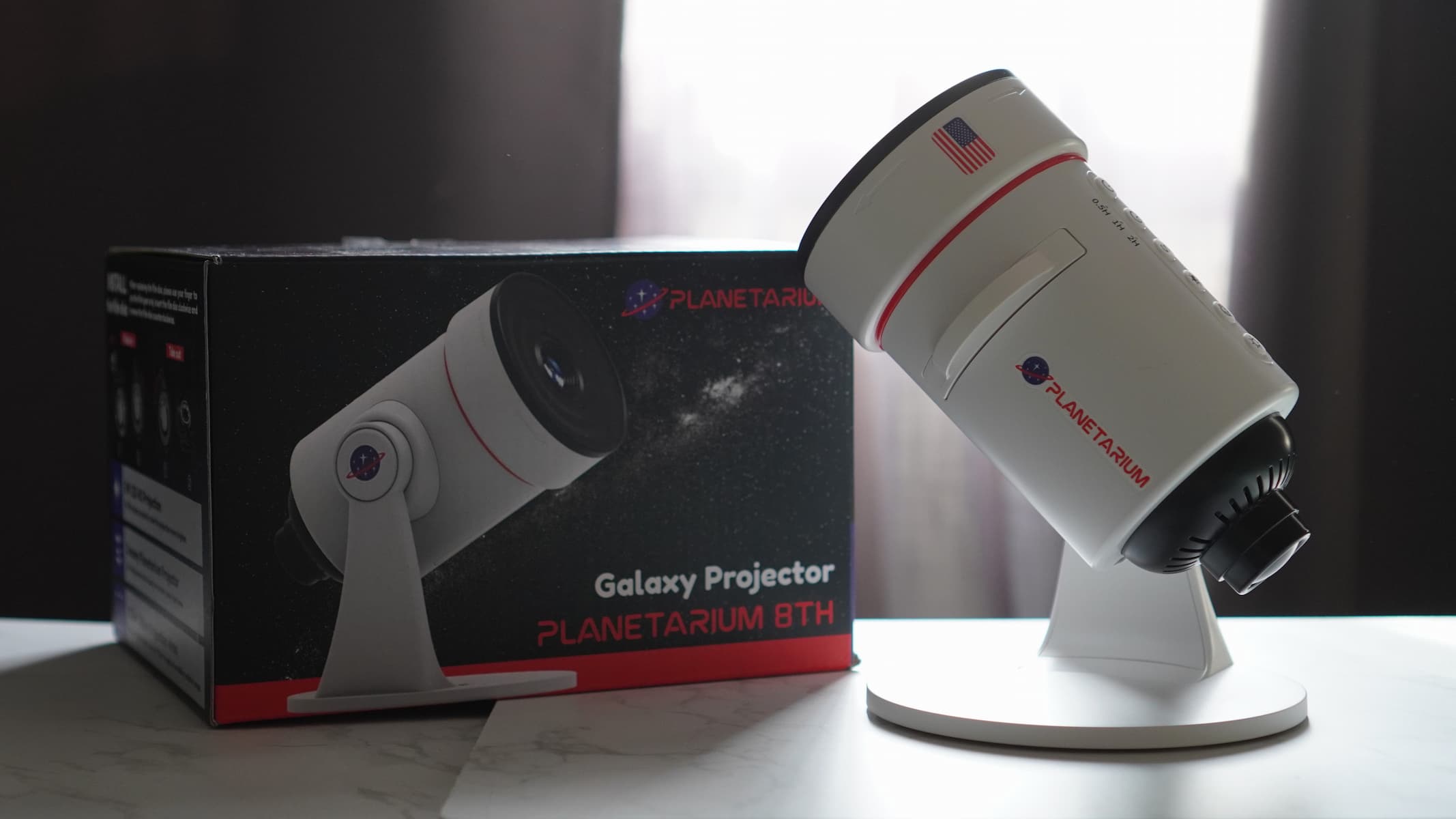Hubble captures 'candyfloss' clouds | Space photo of the day for May 13, 2025
Dusty gas clouds sparkle in the Large Magellanic Cloud.

What might look like sparkling wisps of candy floss, or cotton candy, are dusty gas clouds in the Large Magellanic Cloud, a dwarf galaxy, as imaged by the Hubble Space Telescope. The pink, blue and green colors are not only beautiful to look at but can inform the viewer about the many wavelengths that comprise this photo.
What is it?
A part of a nebula in a dwarf galaxy called the Large Magellanic Cloud, the photo by the Hubble Space Telescope shows a gas cloud strewn in front of a star field.
This type of view is made possible by Hubble’s cameras, including the Wide Field Camera 3 (WFC3) that was used to collect the observations for this image. WFC3 has a variety of filters, each of which lets through only specific wavelengths, or colors, of light.
This image combines observations made with five of WFC3's different filters, including some that capture ultraviolet and infrared light that are outside the field of vision for the human eye.
Where is it?
The Large Magellanic Cloud is located 160,000 light-years from Earth in the constellations Dorado and Mensa. It is the largest of the Milky Way’s many small satellite galaxies.
Why is it amazing?
People often wonder if the colors depicted in photos like these match what humans would see if they were to travel to the location.
The specialists who process Hubble's images combine the telescope's raw data to compose multi-colored images like this one. To do so, they assign a color to each wavelength filter. Visible-light observations are typically matched to the color that the filter allows through. As such, shorter wavelengths of light, such as ultraviolet, are usually colored in blue or purple hues, while longer wavelengths, like infrared, are typically shown in shades of red.
Breaking space news, the latest updates on rocket launches, skywatching events and more!
This way, the images stay close to reality while adding in new information from the portions of the electromagnetic spectrum that humans cannot see with our eyes alone.
Want to know more?
You can read more about the Large Magellanic Cloud and the Hubble Space Telescope. You can also learn more about how Hubble Space Telescope images are made.
Join our Space Forums to keep talking space on the latest missions, night sky and more! And if you have a news tip, correction or comment, let us know at: community@space.com.

Robert Pearlman is a space historian, journalist and the founder and editor of collectSPACE.com, a daily news publication and community devoted to space history with a particular focus on how and where space exploration intersects with pop culture. Pearlman is also a contributing writer for Space.com and co-author of "Space Stations: The Art, Science, and Reality of Working in Space” published by Smithsonian Books in 2018.In 2009, he was inducted into the U.S. Space Camp Hall of Fame in Huntsville, Alabama. In 2021, he was honored by the American Astronautical Society with the Ordway Award for Sustained Excellence in Spaceflight History. In 2023, the National Space Club Florida Committee recognized Pearlman with the Kolcum News and Communications Award for excellence in telling the space story along the Space Coast and throughout the world.
You must confirm your public display name before commenting
Please logout and then login again, you will then be prompted to enter your display name.
